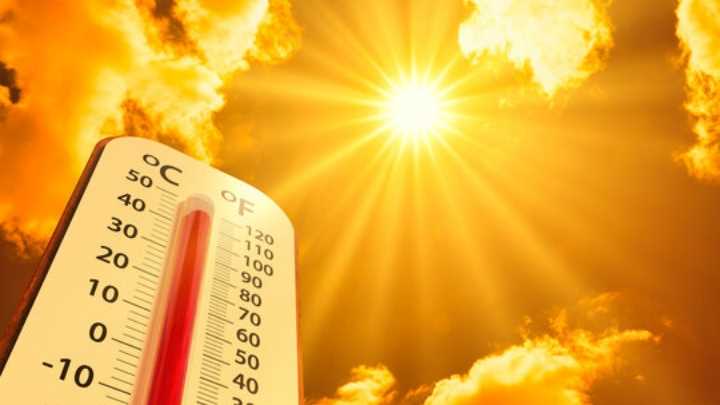
As North India continues to reel under an intense heatwave, health experts and local authorities are urging citizens to take necessary precautions to stay safe, particularly during peak heat hours between 12 p.m. and 4 p.m. The relentless rise in temperature has prompted advisories across Jammu & Kashmir, especially for vulnerable groups such as children, the elderly, and outdoor workers.
Meteorological departments have reported that the mercury has consistently hovered several degrees above the seasonal average in many parts of the region. In some districts, maximum temperatures have crossed 42°C, raising serious concerns about heatstroke, dehydration, and other heat-related illnesses.
Medical professionals are stressing the importance of staying hydrated. “In this weather, it’s crucial to drink plenty of water—even if you’re not feeling thirsty,” said Dr. Parvez Ahmed, a general physician at a city hospital. “Avoid caffeinated and sugary beverages, as they can accelerate dehydration. Instead, opt for water, lemon water, buttermilk, or ORS solutions.”
People are also advised to avoid strenuous activities during the hottest part of the day. Those who must go outside are encouraged to wear light-colored, loose-fitting clothing, use umbrellas or hats, and apply sunscreen. “Wear breathable cotton clothes and cover your head. Try to walk or work in shaded areas if going outdoors is unavoidable,” said Dr. Ahmed.
Construction workers, traffic personnel, vendors, and delivery agents are among the most affected by the soaring temperatures. NGOs and local administration in some areas have stepped up efforts by distributing water bottles, setting up hydration points, and installing temporary shelters.
The Health Department has also issued a public advisory listing the symptoms of heatstroke, which include high body temperature, dizziness, nausea, dry skin, confusion, and loss of consciousness. In such cases, immediate medical attention is advised.
Schools have been instructed to take preventive measures for students, such as adjusting school timings, ensuring cool drinking water is available, and discouraging outdoor sports during peak hours. Some districts have even temporarily revised class schedules to avoid exposing children to mid-day heat.
Farmers, too, have been urged to adjust their working hours. “We start before sunrise and take a long break during the noon hours,” said Ganesh Sharma, a farmer in Udhampur. “It’s just not safe to work under the open sky after 11 a.m.”
Authorities have encouraged the public to check weather updates regularly and remain indoors during peak heat hours whenever possible. With conditions likely to persist for the next several days, officials reiterate the importance of community awareness and cooperation in preventing heat-related casualties.
As temperatures continue to rise, the message is clear: stay cool, stay safe, and stay hydrated.
As North India continues to reel under an intense heatwave, health experts and local authorities are urging citizens to take necessary precautions to stay safe, particularly during peak heat hours between 12 p.m. and 4 p.m. The relentless rise in temperature has prompted advisories across Jammu & Kashmir, especially for vulnerable groups such as children, the elderly, and outdoor workers.
Meteorological departments have reported that the mercury has consistently hovered several degrees above the seasonal average in many parts of the region. In some districts, maximum temperatures have crossed 42°C, raising serious concerns about heatstroke, dehydration, and other heat-related illnesses.
Medical professionals are stressing the importance of staying hydrated. “In this weather, it’s crucial to drink plenty of water—even if you’re not feeling thirsty,” said Dr. Parvez Ahmed, a general physician at a city hospital. “Avoid caffeinated and sugary beverages, as they can accelerate dehydration. Instead, opt for water, lemon water, buttermilk, or ORS solutions.”
People are also advised to avoid strenuous activities during the hottest part of the day. Those who must go outside are encouraged to wear light-colored, loose-fitting clothing, use umbrellas or hats, and apply sunscreen. “Wear breathable cotton clothes and cover your head. Try to walk or work in shaded areas if going outdoors is unavoidable,” said Dr. Ahmed.
Construction workers, traffic personnel, vendors, and delivery agents are among the most affected by the soaring temperatures. NGOs and local administration in some areas have stepped up efforts by distributing water bottles, setting up hydration points, and installing temporary shelters.
The Health Department has also issued a public advisory listing the symptoms of heatstroke, which include high body temperature, dizziness, nausea, dry skin, confusion, and loss of consciousness. In such cases, immediate medical attention is advised.
Schools have been instructed to take preventive measures for students, such as adjusting school timings, ensuring cool drinking water is available, and discouraging outdoor sports during peak hours. Some districts have even temporarily revised class schedules to avoid exposing children to mid-day heat.
Farmers, too, have been urged to adjust their working hours. “We start before sunrise and take a long break during the noon hours,” said Ganesh Sharma, a farmer in Udhampur. “It’s just not safe to work under the open sky after 11 a.m.”
Authorities have encouraged the public to check weather updates regularly and remain indoors during peak heat hours whenever possible. With conditions likely to persist for the next several days, officials reiterate the importance of community awareness and cooperation in preventing heat-related casualties.
As temperatures continue to rise, the message is clear: stay cool, stay safe, and stay hydrated.
© Copyright 2023 brighterkashmir.com All Rights Reserved. Quantum Technologies